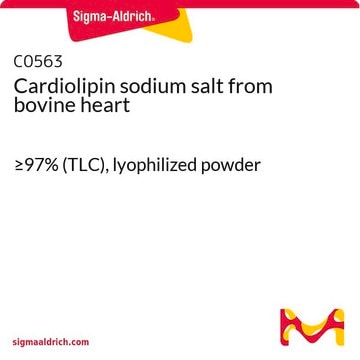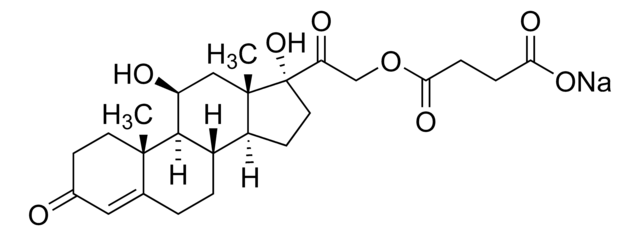P4279
L-α-phosphatidylcholine
egg yolk, Type XIII-E, 100 mg/mL in ethanol, solution
Synonyme(s) :
1,2-diacyl-sn-glycéro-3-phosphocholine, 3-sn-phosphatidylcholine, L-α-lécithine, Asolectine, PC
About This Item
Produits recommandés
Source biologique
egg yolk
Niveau de qualité
Type
Type XIII-E
Pureté
≥99% (TLC)
Forme
solution
Concentration
100 mg/mL in ethanol
Groupe fonctionnel
phospholipid
Type de lipide
phosphoglycerides
Température de stockage
−20°C
InChI
1S/C42H80NO8P/c1-6-8-10-12-14-16-18-20-21-23-25-27-29-31-33-35-42(45)51-40(39-50-52(46,47)49-37-36-43(3,4)5)38-48-41(44)34-32-30-28-26-24-22-19-17-15-13-11-9-7-2/h14,16,20-21,40H,6-13,15,17-19,22-39H2,1-5H3/b16-14-,21-20-/t40-/m1/s1
Clé InChI
JLPULHDHAOZNQI-ZTIMHPMXSA-N
Vous recherchez des produits similaires ? Visite Guide de comparaison des produits
Catégories apparentées
Description générale
Application
Actions biochimiques/physiologiques
Mention d'avertissement
Danger
Mentions de danger
Conseils de prudence
Classification des risques
Eye Irrit. 2 - Flam. Liq. 2
Code de la classe de stockage
3 - Flammable liquids
Classe de danger pour l'eau (WGK)
WGK 1
Point d'éclair (°F)
60.8 °F
Point d'éclair (°C)
16 °C
Équipement de protection individuelle
Eyeshields, Faceshields, Gloves, type ABEK (EN14387) respirator filter
Certificats d'analyse (COA)
Recherchez un Certificats d'analyse (COA) en saisissant le numéro de lot du produit. Les numéros de lot figurent sur l'étiquette du produit après les mots "Lot" ou "Batch".
Déjà en possession de ce produit ?
Retrouvez la documentation relative aux produits que vous avez récemment achetés dans la Bibliothèque de documents.
Les clients ont également consulté
Notre équipe de scientifiques dispose d'une expérience dans tous les secteurs de la recherche, notamment en sciences de la vie, science des matériaux, synthèse chimique, chromatographie, analyse et dans de nombreux autres domaines..
Contacter notre Service technique









